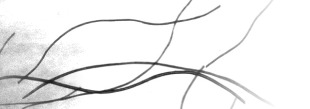Abstracts
Workshop "Measurement of the morphological structure of fibers and particles"
Geometrical evaluation of the structure of plant products with Fibreshape and Powdershape
Dr. Hubert Schmid, Innovative Sintering Technologies Ltd., Switzerland
Abstract
Many plant products have been in use for a long
time for the production of man made products such as fibres for textiles
or wood chips for the chip board industry. One key factor for the
quality of natural products and at the same time for the production cost
are the fibre or/and chip quality itself. Till this day, a precise
definition of fibre quality has not been given because of a lack of
information on the complex object geometry. The fibre length
distribution and the fibre thickness distribution are parameters that
describe the morphology of fibrous objects quite well. The Fibreshape
system allows to measure length and width as well as other morphological
shape descriptors. Due to the easy and fast sample preparation a high
amount of objects can be scanned and measured which statistically
results in a high accuracy. Several applications of Fibreshape on plant
product characterization are presented.
Length reduction of fibers in twin-screw extrusion of long fiber reinforced thermoplastics
Salim Derdouri, Industrial Materials Institute, National research Council Canada
Abstract
The mechanical
properties of fiber reinforced systems depend on fiber concentration,
fiber orientation, fiber length and fiber-matrix adhesion. Breakage
of glass fibers in long fiber reinforced thermoplastics (LFT) during
processing is a serious issue for plastics compounders, compression
or injection molders. This study is therefore concerned with the
fiber damage occurring during the extrusion process using a
twin-screw system. Both glass and natural fibers are of interest to
the study using polyamide 6 as the polymeric matrix. Continuous glass
fibers roving was fed to a clamshell twin-screw extruder at various
screw speeds and polymer feed rate. Fiber length distributions (FLD)
were determined at various in-situ locations along the fiber
extrusion path and within the extrudate. The effect of the extrusion
conditions on the average fiber length will be discussed. It is found
that the experimental number FLD can be well represented by the
empirical model of Rosin-Rammler. Using the statistical analysis of
the breakage of one-dimensional materials such as fibers, two
theoretical breakage laws were also tested against the experimental
data. The results show that a random breakage function is a better
representation of the events than a parabolic breakage function.
Image analysis in the brain
Georg Schmid, Vilters, Switzerland
Abstract
In image analysis the recognition of the different
specimen is required before a particular model of measurement can be
applied. The task of recognizing objects reliably and quickly is one of
the brains greatest achievements and one of computer science biggest
failures. What is the state of the art in computerized object
recognition? What does the brain do differently? Finally, what are the
next steps of development in Fibreshape with the functioning of the
brain as a model? While answering these questions we shall learn the basics of understanding and learning in the brain.


